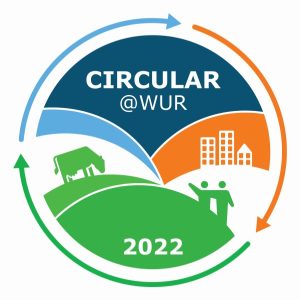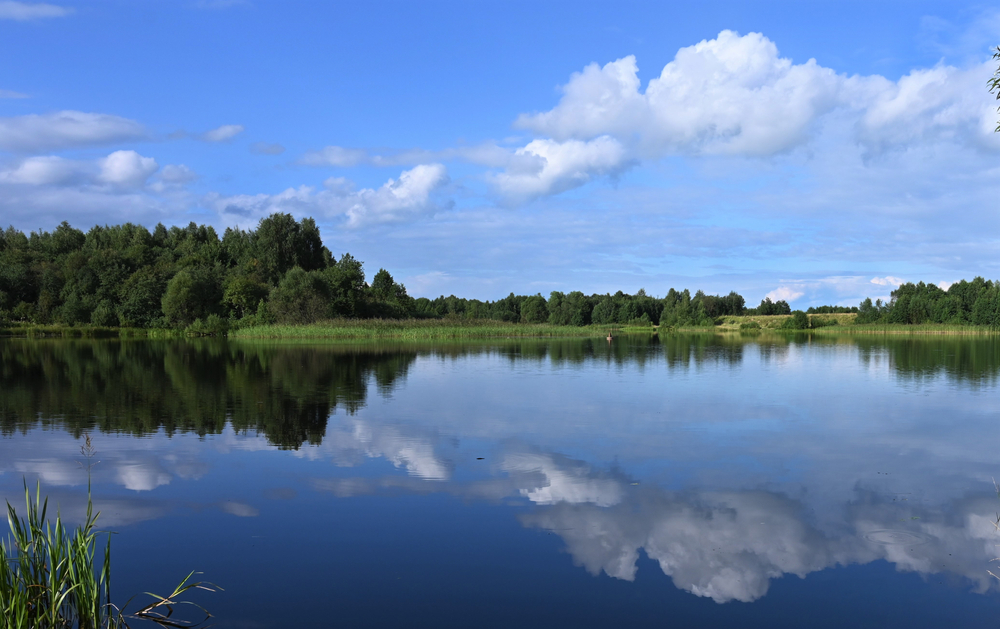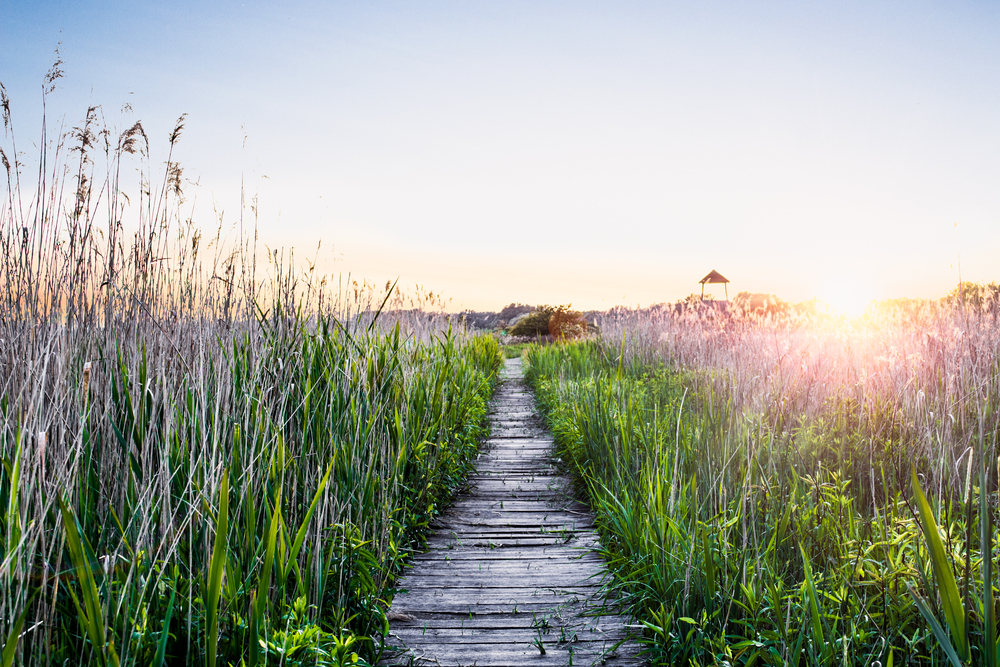European nature and forests in 2050
This blog was written by Kees Hendriks and Nico Polman. It is part two of a series on a circular and climate neutral Europe in 2050.
It is 2050 and Europe is completely circular and climate-neutral. What do you see around you? That is the question we spread within WUR. Based on all the received input, we wrote four inspiring future stories about how Europe could look in 2050. The stories are written from an I perspective to present a future and not the future. The topics of the stories are urban areas, agricultural areas, forest and nature areas and water bodies. This work is part of the One Wageningen challenge to develop a climate knowledge agenda for WUR and is funded by the KB programme Circular and Climate neutral. In this series of blogs, we want to share these stories with you. This is the second story in this series.
As a little kid, my father often took me out for a stroll in nature. During those walks, he told me a lot about the birds and the plants and about the beauty of nature. Thanks to my father, I became a big nature lover. Now, in 2050, I still often go for a hike, as do many others who travel along the extensive new trails that cross European nature. Many of these trails are now as famous as the trail to Compostela. But since my childhood, climate has changed undeniably and has changed the natural environment as well.
The kind of forest I used to walk in with my father, I can now only see in outdoor museums, as we call the small remnants of nature reserves. Here nature is intensively managed, conserved and restored. This micro-management enables rare species to survive, especially in the most valuable and vulnerable nature areas.
Nature outside these outdoor-nature-museums is completely different. This nature consists of large units in the landscape where spontaneous processes are the shaping forces, creating highly dynamic landscapes with a large diversity in habitats and species. However, habitats and species composition changed substantially, driven by the changing climate, integration of land use in natural areas and intensive but sustainable utilisation of ecosystem services. These ecosystem services are still delivered by nature, like in the old days, but by different species and are key to a sustainable economy and human well-being.
Well-connected forests
So now, when I go hiking, I visit forests areas that have arisen in marginal rural areas and they are well adapted to the new climate. The forests are throughout Europe and well connected through corridors and stepping stones in the rural area like hedge rows, tree rows, small forests, agroforestry, forest gardens and natural strips. This way, deer, wild boar, wolves and other animals can freely migrate from one place to another, safe of road-kills. Also, plants can easily disperse through these corridors. This way they can migrate with the shifting climate zones.
I am not the only one enjoying these areas. The amenity of the landscape attracts many people and the nature and forest areas are intensively used for outdoor recreation, sports, safari tours and spiritual experiences. These areas have been developed with a system of carbon credits, because trees and forests soils store large amounts of carbon. Businesses use this system to compensate their carbon footprint. The design and large scale application of this carbon compensation systems really paved the way for the establishment of these nature corridors.
Essential in circular bioeconomy
The forest is essential in the circular bioeconomy. All forests are managed sustainably and large-scale clearing areas have been replaced by small-scale cut-out systems. Forest products are cascaded optimal and used only in long living products such as constructions. This way, carbon is stored for long periods of time. Furthermore, forests retain and filter water contributing to high quality drinking water and flood protection.
Salt marshes and seagrass meadows
Not only forests have changed drastically. In the marine environment, new extended salt marshes and seagrass meadows safeguard shores to sea level rise. They are sequestering large amounts of blue carbon and create habitat for benthos on which large flogs of water birds forage. Although there are strict marine nature reserves, that are delivery rooms and safe havens for many fish species like cod fish, rays, sharks, bluefin tuna and common bottlenose dolphins, many areas are multifunctional. Wind turbine parks are combined with oyster cultures and recreation, like diving and hotels on sea. Sand needed for infrastructure, construction and coastal protection, is extracted in a limited way, using aquatic life friendly techniques.
Extented river areas
River areas cover extended areas with shallow meandering streams, swamps, reed beds and open waters. Large populations of water birds, beavers, otters, water insects and plants are making this a very attractive landscape for recreation. Hikers can walk all along the river from the source to the sea all through natural landscape. This landscape is very dynamic with frequent water peaks, but no high dikes are needed because of the expansion of the area. High water peaks can easily be stored in the area, supporting the biodiversity of the area. The area produces clear drinking water for large parts of the population.
Culture and nature in balance
Besides nature, society and human culture have also changed. We have said farewell to a culture that combats nature to reduce risks and increase welfare at the cost of nature and natural resources. Instead, we have grown to a culture that is in balance with nature and uses nature for societal well-being and prosperity. Cultural and spiritual values of nature are the basis of nature conservation and intertwined in society, economy and policy.
Integrated with other land use
Natural areas are more and more integrated with other types of land-use like urban and agriculture. In the cities, green roofs, nature-inclusive buildings, tiny forests and forest gardens are common. Future urban expansion is fitted in existing and new nature areas in such a way that they have zero or a positive impact on the environment.
Biodiversity is the base
European policy safeguards that natural processes can take place undisturbed. This way, natural patterns and structures will develop that are important for climate resilient and biodiverse nature areas. Enhancing nature and biodiversity is the starting point of all actions that impact nature, simply just because biodiversity is the base of our existence. We can only adapt to effects of climate change and find mitigation strategies if we make use of natural processes and nature-based solutions.
In a few decades, I will tell my grandchildren about the discussions we had on climate change and protection of biodiversity and sustainable forestry. They will hardly believe me: by then, these values are fully integrated in the economy and culture of society.
 At the Circular@WUR conference in April 2022, WUR will provide an overview of the latest knowledge about a circular, biobased society. Participants can experience the circular challenge in masterclasses and gain inspiration by visiting the most innovative circular companies in the Netherlands. Relevant, impactful keynote speakers give their inspiring vision. Imke de Boer and Hans van Meijl from WUR, and guest speakers such as Jaqueline Cramer (Utrecht Sustainability Institute), Helmut Haberl (University of Natural Resources and Life Sciences Austria) and Bas Eickhout (Member of the European Parliament on behalf of the Green Left, part of the European Green Party). Read more.
At the Circular@WUR conference in April 2022, WUR will provide an overview of the latest knowledge about a circular, biobased society. Participants can experience the circular challenge in masterclasses and gain inspiration by visiting the most innovative circular companies in the Netherlands. Relevant, impactful keynote speakers give their inspiring vision. Imke de Boer and Hans van Meijl from WUR, and guest speakers such as Jaqueline Cramer (Utrecht Sustainability Institute), Helmut Haberl (University of Natural Resources and Life Sciences Austria) and Bas Eickhout (Member of the European Parliament on behalf of the Green Left, part of the European Green Party). Read more.



Sorry: the assumption that Carbon Credits can be an important source of financing for Europe’s forests is incorrect. If the real Social Carbon Costs are taken into account, many services become too expensive (energy from fossil fuels, flying with kerosene, etc.). If the real costs are not taken into account it is just green-washing.